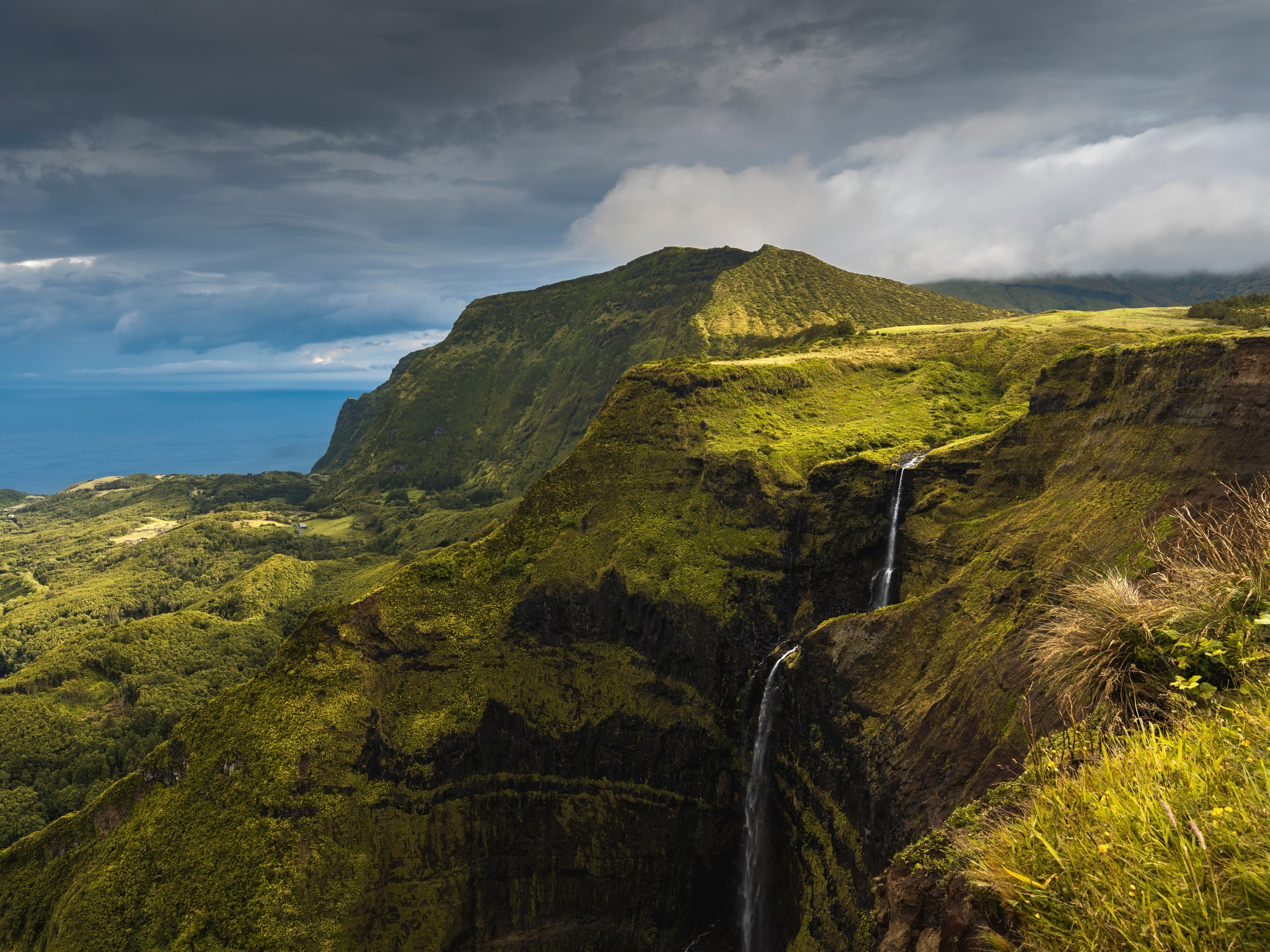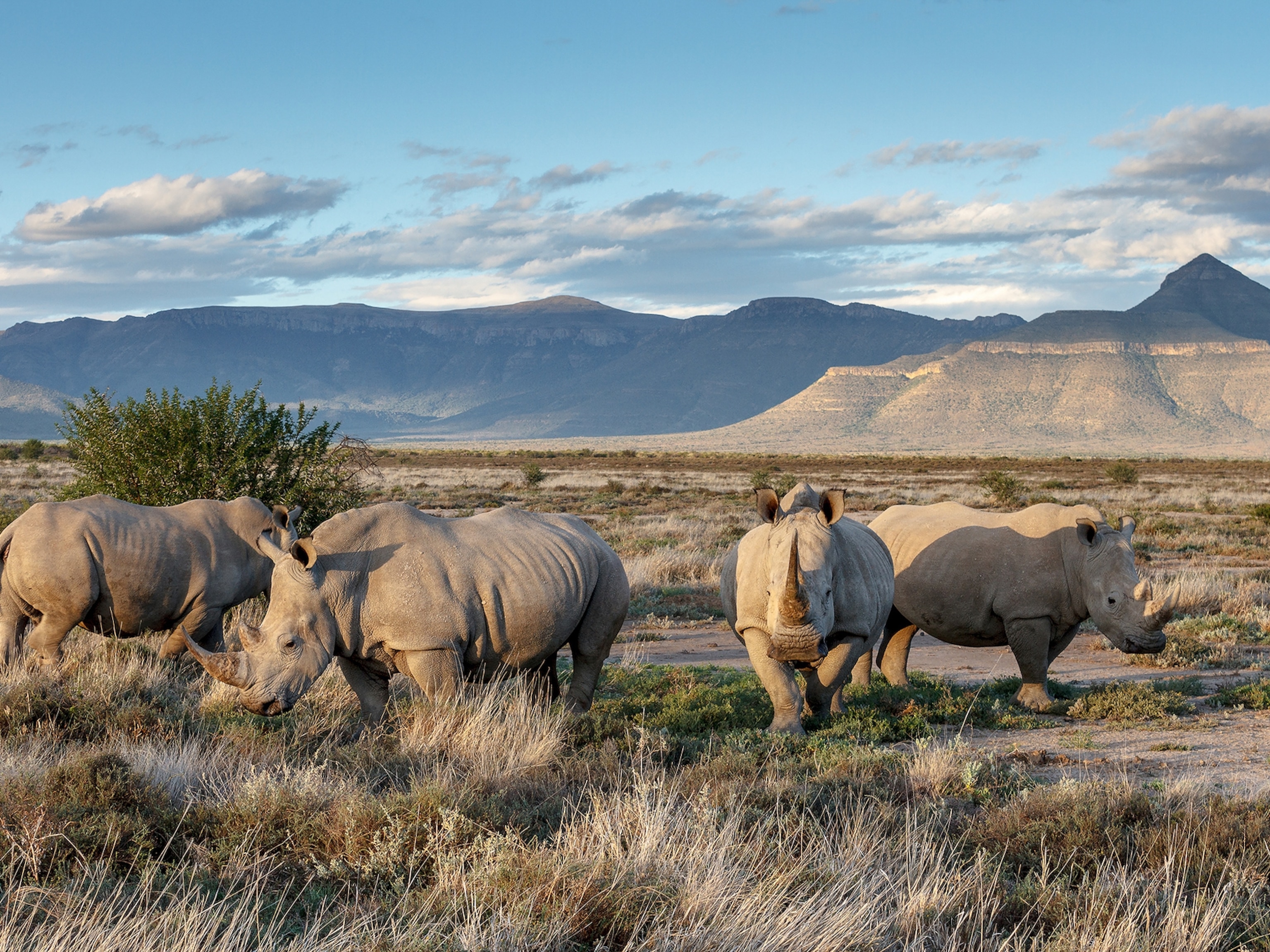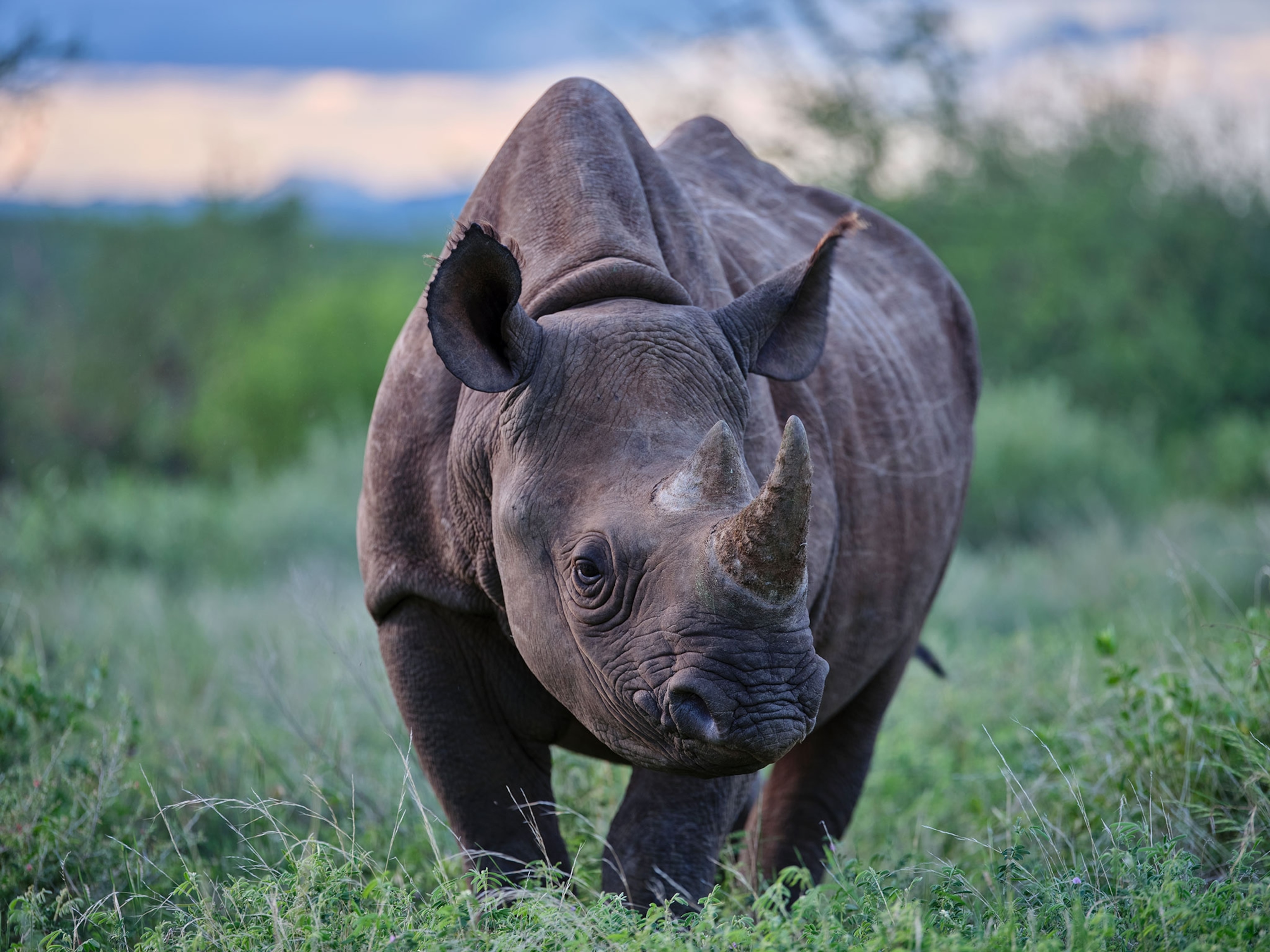See Kenya’s wildlife in a different light: on horseback
Riders can encounter leopards, rhinos, or zebras on these intimate safaris in Kenya's Borana Conservancy.
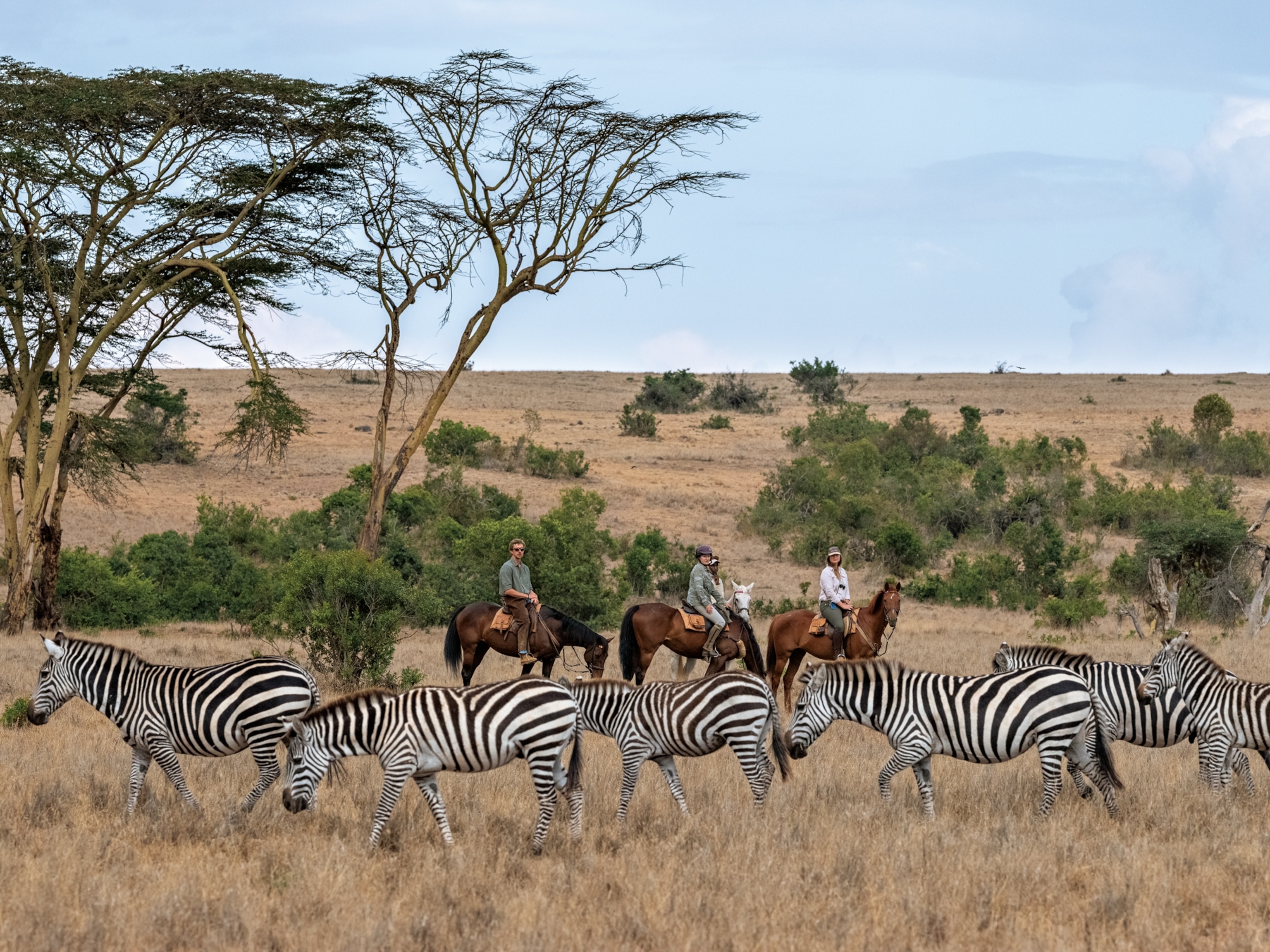
The equatorial sun is relentless, bearing down as I lead Elaine, a walnut bay with a dark mane, through thorny acacia and dense shrub. It’s been a long day in the saddle. My thighs ache and our camp beckons across a ridge of ancient folding hills in the Lolldaiga Range of northern Kenya, a mosaic of intertwined landscapes and communities.
Suddenly Elaine’s ears flick into alert, antenna-like, and the muscles of her body tense beneath me. Our guide Nicholus Nangunye Tuta stretches out a lean arm toward a bush just meters away. My eyes focus, straining to see what the others already have: two amber orbs glowing from a shadowed form. It’s a young lion, quick and strong, crouched amid the high grass.
A wild silence hangs between us.
Without the defensive armor and high wheels of a safari vehicle, I feel completely exposed. Peering into the bush, I’m suspended between wonder and terror, the distance between myself and the savannah’s most notorious predator laughably small. Usually, I’m the one tracking the lion, camera in hand. Now, the lion shifts in my consciousness from object to subject. I shift, too, acutely aware of the soft flesh of my own body.
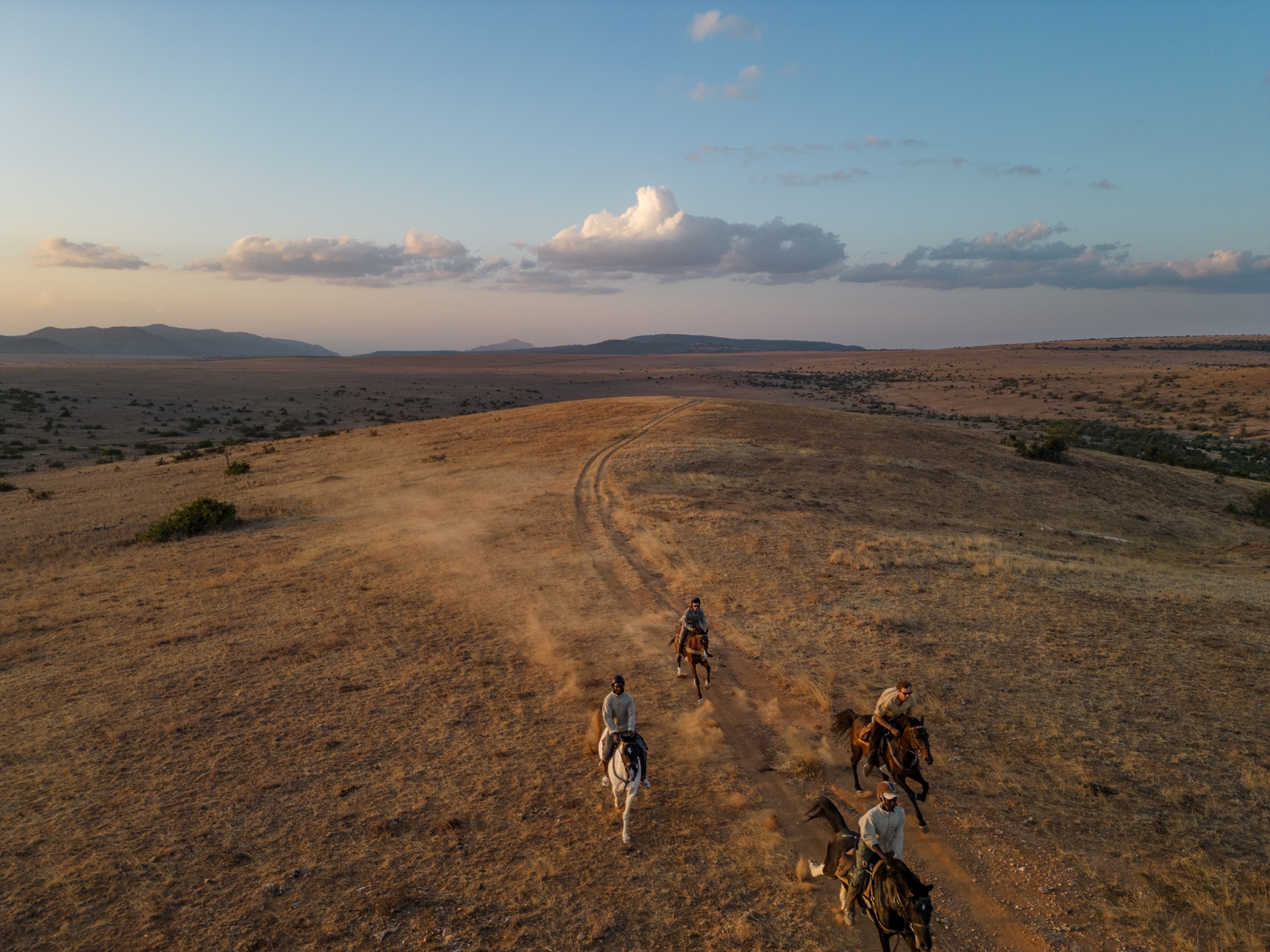


Nicholus nods his head in the other direction, a safer distance away. He points to indentations in the dust. “Look, this is a big lion, and these are young ones, some cubs,” he says. “Probably a mother.” Pawprints mottle the earth, each telling the story of more lions, moving in different directions. It was time to go.
(Horseback riding in Kenya is one of 20 best travel experiences for 2024. See the full list here.)
In the country where they started in the 1970s, horseback safaris are still the most immersive way to view wildlife in Kenya. To journey on horseback is to break down the walls—meant to protect, but also to separate us from the natural world. And as we’re absorbed in the thrill of the experience, we’re vividly reminded of the importance of protecting these wild spaces.
Out here your horse is your translator, responding to the low hiss of a leopard, the soft scent of an elephant herd, the cool morning breeze descending from Mount Kenya’s glacial peaks. Your job is to learn how to listen.
Safari tourism and conservation
Saddling up the next morning, we fall into a nose-to-tail line, murmurs of conversation fading as we enter the light-dappled mountain forest. African olive trees stretch out between sentinel-like cedar, and wild orchids root amid the branches. It looks like challenging terrain to navigate, but this trail was blazed by grazing elephants and meanders through the trees with the crooked, effortless sweep of a river.

Around a corner the rough-hewn outline of Mount Kenya appears. Three million years ago this singular volcano was birthed from the Earth’s core, rising to 23,000 feet before time wore it down. Known first as Kirinyaga by the Kikuyu, who lived at its feet and considered it sacred, Mount Kenya is the highest mountain in the country that became its namesake.
Ice still sparkles off its basalt peaks, even though, as our planet has warmed over the last 80 years, its once mighty glacier has shrunk by 90 percent. The lush volcanic greenery of the country’s center fades here to a more austere beauty of sparse woods, arid plains, and isolated mountains. Crops yield to cows.
(This is the future of safaris in Africa.)
Like many conservancies in Kenya, Borana began as a cattle ranch, though its land was used to sustain livestock long before that. For thousands of years, cows were the center of culture and currency for the Maasai, Samburu, Pokot, and other pastoral groups. When national parks and conservancies began to be established in the middle of the 20th century, these same groups routinely found themselves barred from grazing their animals on land they had relied on for generations.
Borana now aims for deeper engagement with its neighbors, with outreach programs such as Mazingira Yetu, or “our environment” in Kiswahili, that promote environmental stewardship. Students from nearby communities can spend a day at the conservancy, go on game drives, meet Borana’s rangers, and learn more about sustainable land practices, including water storage, regenerative farming, and tree nurseries. The program launched in 2022, bringing 365 students to Borana, but has grown to welcome more than 1,100 students in 2023.
(Here are five game drive alternatives, from cycling to camping.)
Borana reinvests all profits into conservation efforts like this one, and it’s made a difference: Last year tourism generated over $1 million, leading to the protection of 28 endangered species, the training of 114 rangers, scholarships for 55 students, and drought relief to seven communities. But there’s a necessary, and growing, recognition that change doesn’t happen in isolation, and that long-term efforts to protect wildlife require a shared vision across borders, communities, and interests.
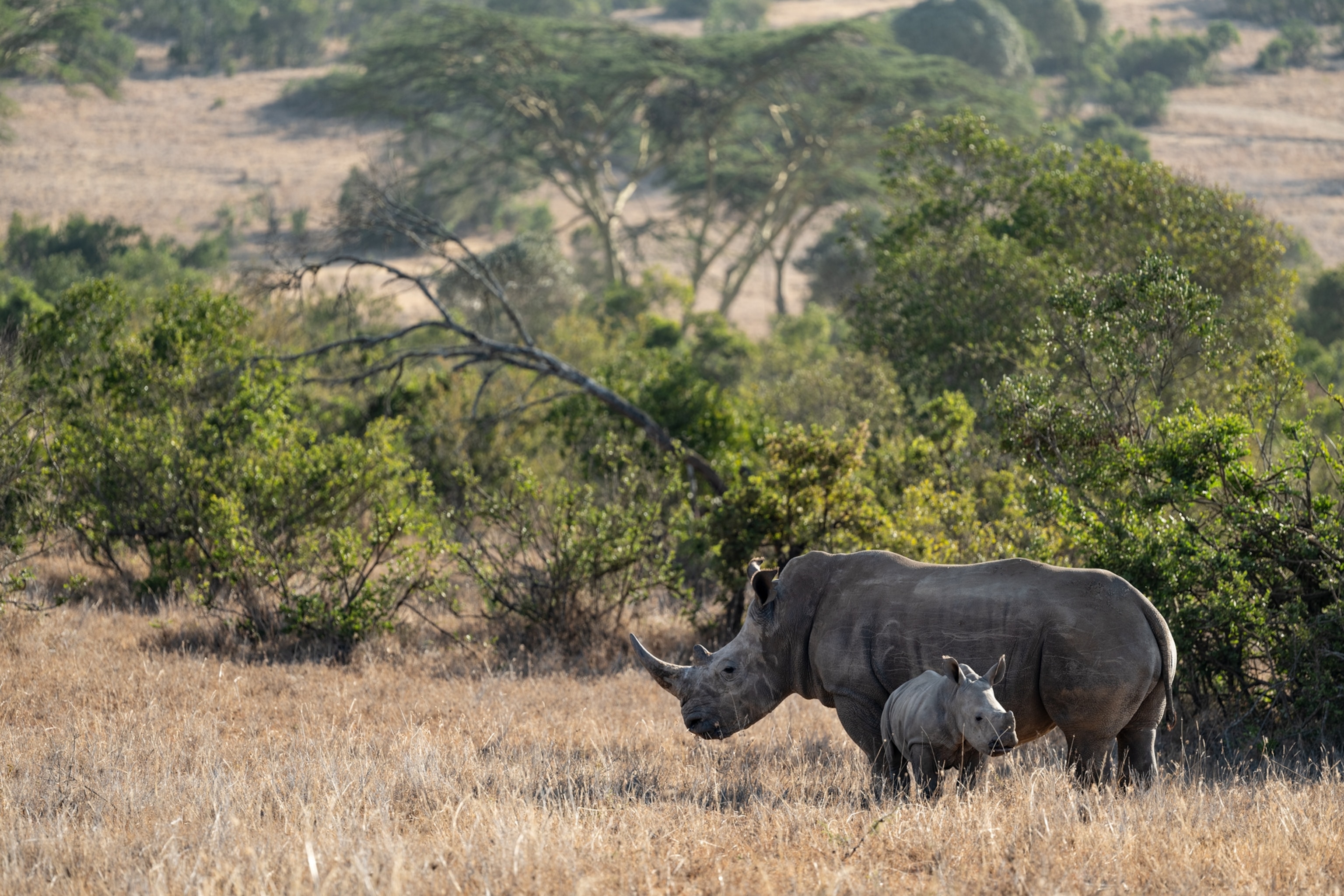
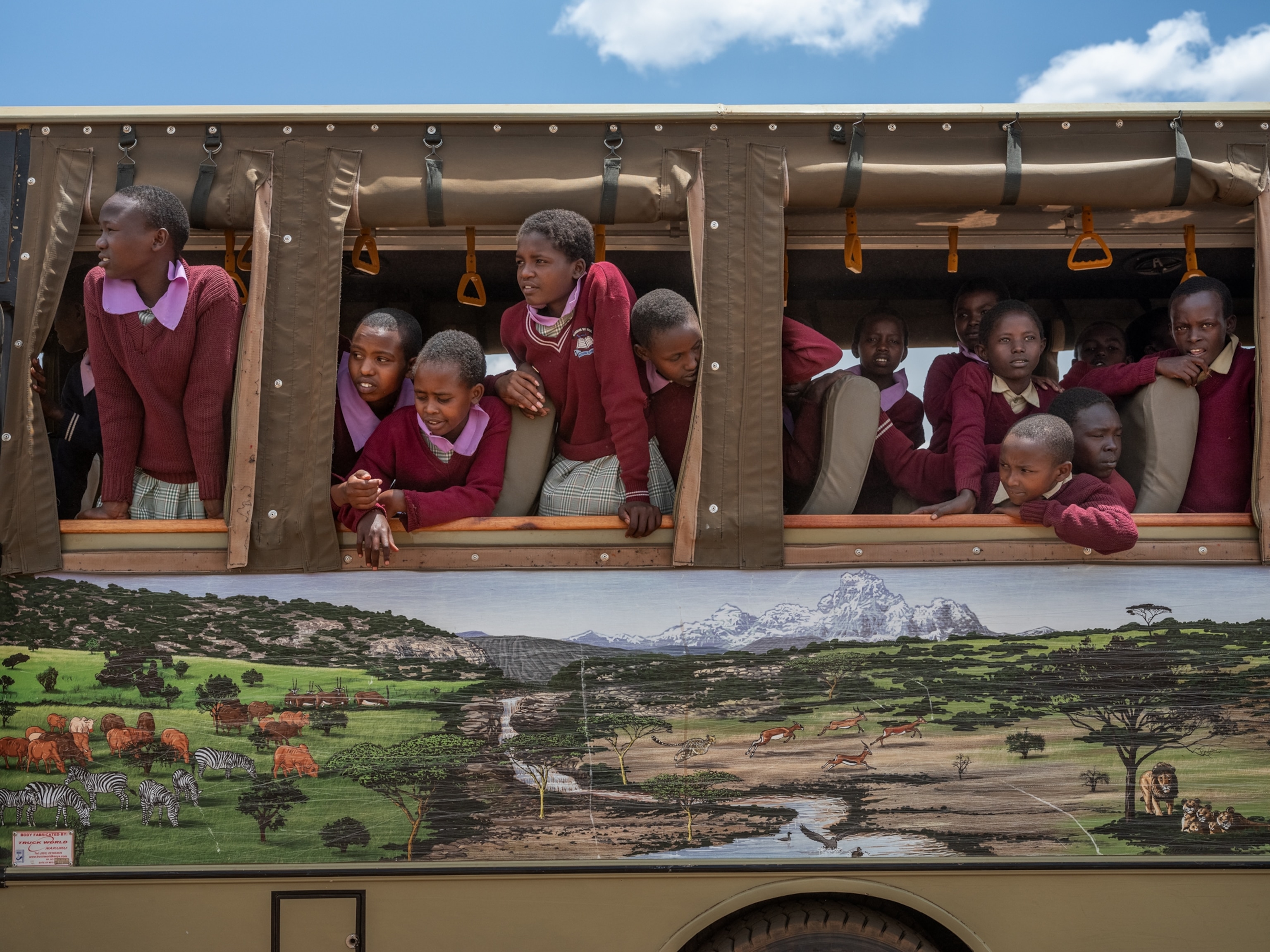

An encounter with rhinos
On my final day in Borana, Elaine and I crest a hill, and I notice her aloof, walnut-hued eyes clock two grey masses moving just ahead. It’s a rhino calf and its mother, who moves languidly forward to place herself between us and her young.
Elaine pauses, the two locked in a mutual gaze. Evolution is a funny thing: These two animals are each other’s closest living relatives. The distant cousins seem to come to a cautious truce. We maintain our distance; the rhinos continue grazing. I relax in the saddle and find my attention shifting from the obvious differences between these creatures to the subtle hints of shared lineage: their soulful eyes, strong jaws, and loping gait.
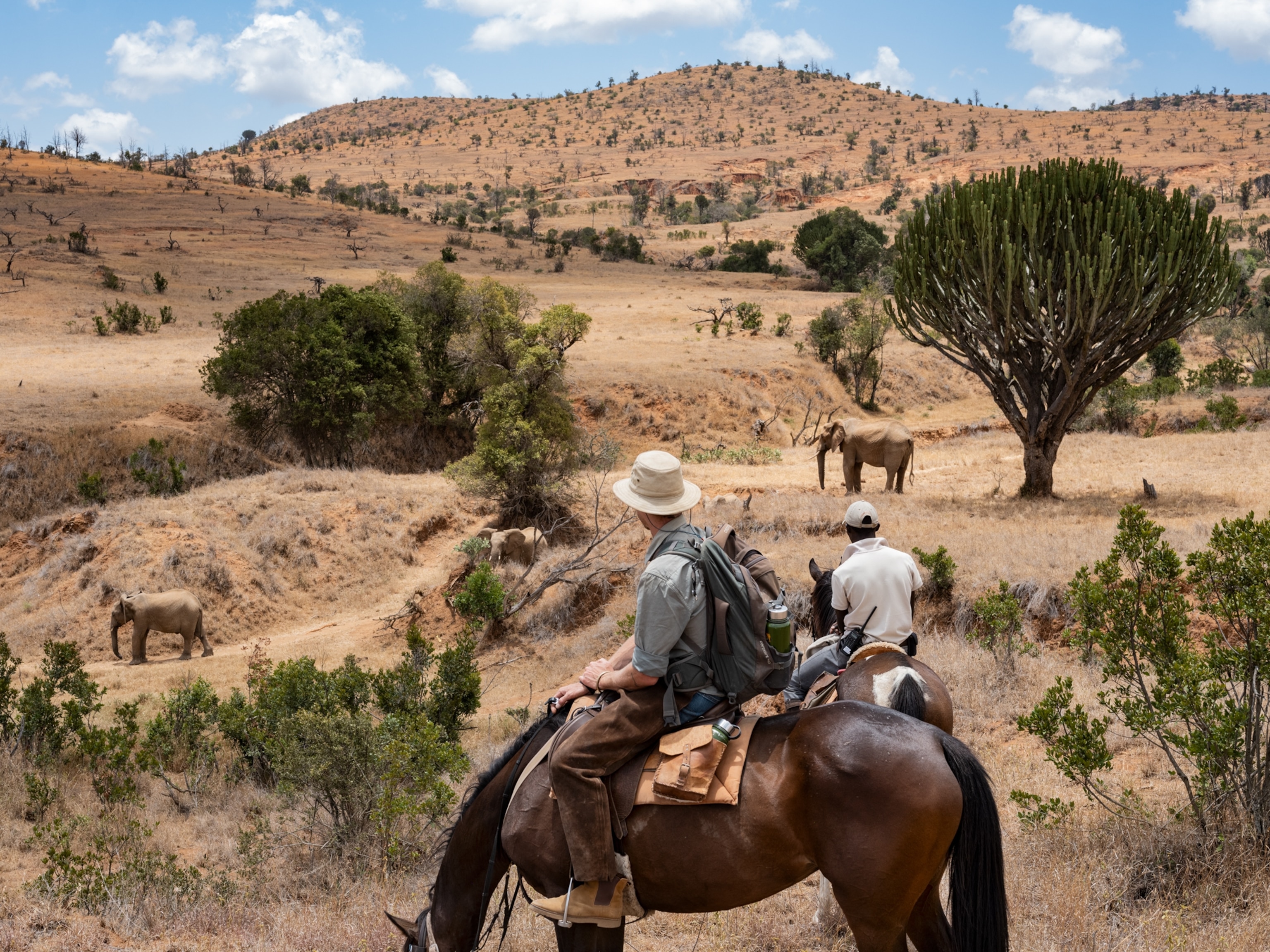
The diversity of our natural world is a wonder, and there is so much to learn from its infinite contrasts—and unexpected connections. As the sun falls behind the hill, I nudge Elaine. She turns away from the now thoroughly unbothered rhinos and we head back home.
What to Know
More activities: Horseback riding is available for all skill levels, but more experienced riders will enjoy a faster ride and be able to venture further. Mountain biking, bush walks, bird watching, and a variety of cultural experiences—as well as a safari in vehicles—offer more ways to experience the biodiversity and landscapes at the foot of Mt. Kenya.
Accommodations: Situated on the hillside above a dam that’s a magnet for wildlife, the boutique lodge features four stand-alone and two family cottages, each with its own character but all featuring large baths, fireplaces, and outside verandahs. Rates include full board with meals prepared using farm-fresh ingredients”, all activities within Borana, and a 24 percent contribution to the conservancy’s environmental and social responsibilities, and range from $830 in standard season to $1,110 for peak season (with lower rates for children under 16).
When to visit: There is no wrong time to go, but after the rains in June and July, or December and January, are particularly lush and lovely. Visitors to Kenya no longer need to apply for a visa as of January 2024.



